 W
WAn outbreak of equine influenza (EI) in Australia was confirmed by the Department of Primary Industries on 24 August 2007 in Sydney. Also known as "horse flu" and "A1 influenza", the rapid outbreak was of the Influenza A virus strain of subtype H3N8. While the virus is highly contagious, it rarely kills adult horses but the performance of thoroughbred racing horses can be affected for several weeks. It can be fatal to young foals and debilitated horses.
 W
WAnoplocephala perfoliata is the most common intestinal tapeworm of horses, and an agent responsible for some cases of equine colic.
 W
WBovine papillomaviruses (BPV) are a paraphyletic group of DNA viruses of the subfamily Firstpapillomavirinae of Papillomaviridae that are common in cattle. All BPVs have a circular double-stranded DNA genome. Infection causes warts of the skin and alimentary tract, and more rarely cancers of the alimentary tract and urinary bladder. They are also thought to cause the skin tumour equine sarcoid in horses and donkeys.
 W
WCandidiasis is a fungal infection due to any type of Candida. When it affects the mouth, in some countries it is commonly called thrush. Signs and symptoms include white patches on the tongue or other areas of the mouth and throat. Other symptoms may include soreness and problems swallowing. When it affects the vagina, it may be referred to as a yeast infection or thrush. Signs and symptoms include genital itching, burning, and sometimes a white "cottage cheese-like" discharge from the vagina. Yeast infections of the penis are less common and typically present with an itchy rash. Very rarely, yeast infections may become invasive, spreading to other parts of the body. This may result in fevers along with other symptoms depending on the parts involved.
 W
WCerebellar abiotrophy, also called cerebellar cortical abiotrophy, or cerebellar degeneration, is a genetic neurological disease in animals best known to affect certain breeds of horses, dogs and cats. It can also develop in humans. It develops when the neurons known as Purkinje cells, located in the cerebellum of the brain, begin to die off. These cells affect balance and coordination. They have a critical role to play in the brain. The Purkinje layer allows communication between the granular and molecular cortical layers in the cerebellum. Put simply, without Purkinje cells, an animal loses its sense of space and distance, making balance and coordination difficult. People with damage to the cerebellum can experience symptoms like unsteady gait, poor muscle control, and trouble speaking or swallowing.
 W
WChronic progressive lymphedema (CPL) is a disease of some breeds of draft horse, whereby the lower legs becomes progressively more swollen. There is no cure; the aim of treatment is to manage the signs and slow progression of the disease. The cause of CPL is not known, although it is suspected that a genetic disorder of elastin metabolism prevents the lymphatic vessels from functioning properly, leading to edema of the lower limbs. CPL resembles the human disease elephantiasis verrucosa nostra.
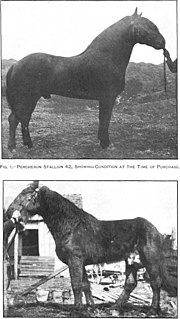 W
WCovering sickness, or dourine, is a disease of horses and other members of the family Equidae. The disease is caused by Trypanosoma equiperdum, which belongs to an important genus of parasitic protozoa, and is the only member of the genus that is spread through sexual intercourse. The occurrence of dourine is notifiable in the European Union under legislation from the OIE. There currently is no vaccine and although clinical signs can be treated, there is no cure.
 W
WCryptococcosis, sometimes informally called crypto, is a potentially fatal fungal disease caused by a few species of Cryptococcus.
 W
WDry eye syndrome (DES), also known as keratoconjunctivitis sicca (KCS), is the condition of having dry eyes. Other associated symptoms include irritation, redness, discharge, and easily fatigued eyes. Blurred vision may also occur. The symptoms can range from mild and occasional to severe and continuous. Scarring of the cornea may occur in some cases without treatment.
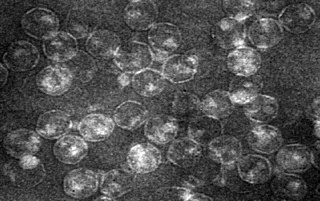 W
WEquine encephalosis virus (EEV) is a species of virus the Orbivirus genus, and a member of the Reoviridae family, related to African horse sickness virus (AHSV) and Bluetongue virus (BTV).
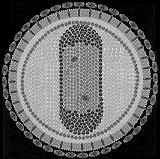 W
WEquine infectious anemia or equine infectious anaemia (EIA), also known by horsemen as swamp fever, is a horse disease caused by a retrovirus and transmitted by bloodsucking insects. The virus (EIAV) is endemic in the Americas, parts of Europe, the Middle and Far East, Russia, and South Africa. The virus is a lentivirus, like human immunodeficiency virus (HIV). Like HIV, EIA can be transmitted through blood, milk, and body secretions. Transmission is primarily through biting flies, such as the horse-fly and deer-fly. The virus survives up to 4 hours in the vector. Contaminated surgical equipment and recycled needles and syringes, and bits can transmit the disease. Mares can transmit the disease to their foals via the placenta. The risk of transmitting the disease is greatest when an infected horse is ill, as the blood levels of the virus are then highest.
 W
WEquine influenza is the disease caused by strains of influenza A that are enzootic in horse species. Equine influenza occurs globally, previously caused by two main strains of virus: equine-1 (H7N7) and equine-2 (H3N8). The OIE now considers H7N7 strains likely to be extinct since these strains have not been isolated for over 20 years. Predominant international circulating H3N8 strains are Florida sublineage of the American lineage; clade 1 predominates in the Americas and clade 2 in Europe.. The disease has a nearly 100% infection rate in an unvaccinated horse population with no prior exposure to the virus.
 W
WAn equine melanoma is a tumor that results from the abnormal growth of melanocytes in horses. Unlike in humans, melanomas in horses are not thought to be caused by exposure to ultraviolet light. Melanomas are the third most common type of skin cancer in horses, with sarcoids being the first most prevalent and squamous-cell carcinoma being second. Melanomas are typically rounded black nodules that vary in size and are usually be found underneath the dock of the tail, in the anal, perianal and genital regions, on the perineum, lips, eyelids, and sometimes near the throatlatch.
 W
WEquine metabolic syndrome (EMS), is an endocrinopathy affecting horses and ponies. It is of primary concern due to its link to obesity, insulin resistance, and subsequent laminitis. There are some similarities in clinical signs between EMS and pituitary pars intermedia dysfunction, also known as PPID or Cushing's disease, and some equines may develop both, but they are not the same condition, having different causes and different treatment.
 W
WEquine protozoal myeloencephalitis (EPM), is a disease caused by the apicomplexan parasite Sarcocystis neurona that affects the central nervous system of horses.
 W
WEquine recurrent uveitis (ERU) – also known as moon blindness, recurrent iridocyclitis, or periodic ophthalmia – is an acute, nongranulomatous inflammation of the uveal tract of the eye, occurring commonly in horses of all breeds, worldwide. The causative factor is not known, but several pathogeneses have been suggested. It is the most common cause of blindness in horses. In some breeds, a genetic factor may be involved.
 W
WHendra virus, scientific name Hendra henipavirus, is a bat-borne virus that is associated with a highly fatal infection in horses and humans. Numerous disease outbreaks in Australia among horses have been caused by Hendra virus. The Hendra virus belongs to the genus Henipavirus, which also contains the Nipah virus, which has also caused disease outbreaks. Hendra virus is the type species of Henipavirus.
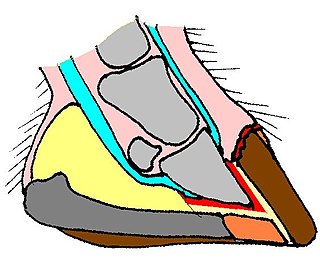 W
WHoof wall separation disease, (HWSD), is an autosomal recessive genetic hoof disease in horses. Research is being carried out at, among others, UC Davis School of Veterinary Medicine in Davis in California. The disease has been found in Connemara ponies and was earlier referred to as Hoof Wall Separation Syndrome, HWSS.
 W
WJunctional epidermolysis bullosa (JEB) is an inherited disorder that is also known as red foot disease or hairless foal syndrome. JEB is the result of a genetic mutation that inhibits protein production that is essential for skin adhesion. Therefore, tissues, such as skin and mouth epithelia, are affected. Blisters form over the entire body causing pain and discomfort,and open sores leave newborn foals highly susceptible to secondary infection. The condition can be categorized into two types of mutations: JEB1 and JEB2. JEB1 is found in Belgian Draft horses, as well as other related Draft breeds. In contrast, JEB2 is found in American Saddlebred horses.
 W
WLaminitis is a disease that affects the feet of ungulates and is found mostly in horses and cattle. Clinical signs include foot tenderness progressing to inability to walk, increased digital pulses, and increased temperature in the hooves. Severe cases with outwardly visible clinical signs are known by the colloquial term founder, and progression of the disease will lead to perforation of the coffin bone through the sole of the hoof or being unable to stand up, requiring euthanasia.
 W
WLavender foal syndrome (LFS), also called coat color dilution lethal (CCDL), is an autosomal recessive genetic disease that affects newborn foals of certain Arabian horse bloodlines. Affected LFS foals have severe neurological abnormalities, cannot stand, and require euthanasia shortly after birth. The popular name originates due to a diluted color of the foal's coat, that in some cases appears to have a purple or lavender hue. However, not all foals possess the lavender coat colour, and colouring can range from silver to light chestnut to a pale pink. Carrier horses have no clinical signs and DNA testing can determine if a horse carries the gene.
 W
WLeptospirosis is a blood infection caused by the bacteria Leptospira. Signs and symptoms can range from none to mild to severe. Weil's disease, the acute, severe form of leptospirosis, causes the infected individual to become jaundiced, develop kidney failure, and bleed. Bleeding from the lungs associated with leptospirosis is known as "severe pulmonary haemorrhage syndrome".
 W
WLethal white syndrome (LWS), also called overo lethal white syndrome (OLWS), lethal white overo (LWO), and overo lethal white foal syndrome (OLWFS), is an autosomal genetic disorder most prevalent in the American Paint Horse. Affected foals are born after the full 11-month gestation and externally appear normal, though they have all-white or nearly all-white coats and blue eyes. However, internally, these foals have a nonfunctioning colon. Within a few hours, signs of colic appear; affected foals die within a few days. Because the death is often painful, such foals are often humanely euthanized once identified. The disease is particularly devastating because foals are born seemingly healthy after being carried to full term.
 W
WThe West Nile virus has caused outbreaks of West Nile fever in countries on a number of different continents since its discovery in 1937 in Uganda.
 W
WThe mallein test is a sensitive and specific clinical test for glanders, a common bacterial disease of equids. This test is an allergic hypersensitivity test used as a diagnosis for glanders. It is caused by a bacterium called Burkholderia mallei, which is contagious for humans and other species. The occurrence of glanders must be reported to the World Organisation for Animal Health. Mallein, a protein fraction of B. mallei, is usually injected by an eye-drop. If an animal is infected, the animal will show swelling in the eye from around 48 hours of injection and may be accompanied by secretion and conjunctivitis. Mallein is non toxic to normal animals.
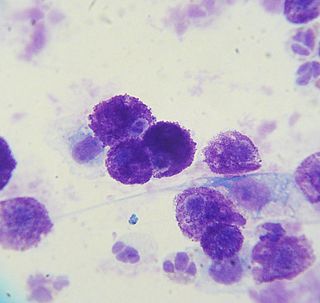 W
WA mastocytoma or mast cell tumor is a type of round-cell tumor consisting of mast cells. It is found in humans and many animal species; it also can refer to an accumulation or nodule of mast cells that resembles a tumor.
 W
WMud fever, also known as scratches or pastern dermatitis, is a group of diseases of horses causing irritation and dermatitis in the lower limbs of horses. Often caused by a mixture of bacteria, typically Dermatophilus congolensis, and Staphylococcus spp, mud fever can also be caused by fungal organisms (dermatophytes). Photosensitization, chorioptic mange mites, contact dermatitis and other conditions also contribute to some cases. This condition is also known as dew poisoning, grease, grease heel, or greasy heel.
 W
WNeonatal isoerythrolysis, also known as hemolytic icterus or hemolytic anemia, is a disease most commonly seen in kittens and foals, but has also been reported in puppies. It occurs when the mother has antibodies against the blood type of the newborn.
 W
WNutritional Muscular Dystrophy is a disease caused by a deficiency of selenium and vitamin E in dietary intake. Soils that contains low levels of selenium produce forages and grains that are deficient in selenium. Similarly, if the forage is of low quality or is not stored properly it may be deficient in vitamin E. If an animal consumes this type of diet without additional supplementation they become susceptible to this disease. This condition often affects young ruminants, such as calves and lambs.
 W
WOsteochondritis dissecans is a joint disorder primarily of the subchondral bone in which cracks form in the articular cartilage and the underlying subchondral bone. OCD usually causes pain during and after sports. In later stages of the disorder there will be swelling of the affected joint which catches and locks during movement. Physical examination in the early stages does only show pain as symptom, in later stages there could be an effusion, tenderness, and a crackling sound with joint movement.
 W
WParascaris equorum is a species of ascarid that is the equine roundworm. Amongst horse owners, the parasites are colloquially called "Ascarids". This is a host-specific helminth intestinal parasite that can infect horses, donkeys, and zebras. Horses up to six months of age are the most susceptible to infection. After this time, infection rates begin to decline and is extremely uncommon in horses over twelve months of age. It cannot infect humans or other animals. It is yellow-white in color, and females can become as large as 15 inches (38 cm) in length. Found worldwide, P. equorum is one of the most difficult equine parasites to kill, requiring larger doses of more powerful anthelmintic medications than are needed for other equine parasites.
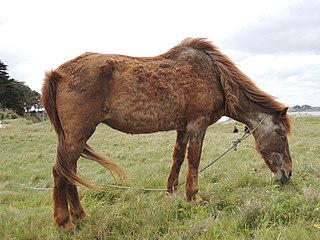 W
WPituitary pars intermedia dysfunction (PPID), or equine Cushing's disease, is an endocrine disease affecting the pituitary gland of horses. It is most commonly seen in older animals, and is classically associated with the formation of a long, wavy coat (hirsutism) and chronic laminitis.
 W
WPoll evil is a traditional term for a painful condition in a horse or other equid, that starts as an inflamed bursa at the anterior end of the neck between vertebrae and the nuchal ligament, and swells until it presents as an acute swelling at the poll, on the top of the back of the animal's head. The swelling can increase until it ruptures and drains. It can be caused by infection from Actinomyces bovis or Brucella abortus organisms, but may also occur due to parasite infestation, skin trauma, or badly fitting horse tack. Because of modern efforts to reduce the incidence of brucellosis in livestock, horses are less exposed to the Brucella abortus organism, and hence most modern cases of poll evil arise from trauma linked to a horse striking its head against poorly designed or low-clearance structures, or to improper use of equipment, particularly leaving a halter on the horse around the clock.
 W
WPythiosis is a rare and deadly tropical disease caused by the oomycete Pythium insidiosum. Long regarded as being caused by a fungus, the causative agent was not discovered until 1987. It occurs most commonly in horses, dogs, and humans, with isolated cases in other large mammals. The disease is contracted after exposure to stagnant fresh water such as swamps, ponds, lakes, and rice paddies. P. insidiosum is different from other members of the genus in that human and horse hair, skin, and decaying animal and plant tissue are chemoattractants for its zoospores. Additionally, it is the only member in the genus known to infect mammals, while other members are pathogenic to plants and are responsible for some well-known plant diseases.
 W
WPythium insidiosum is a species of Pythium and a member of the class oomycota. Pythium insidiosum is mainly found in standing water and occasionally soil. Unlike most Pythium species, which are generally pathogens of terrestrial plants, Pythium insidiosum is a pathogen of mammals. It causes pythiosis, mainly in horses, dogs, and humans. It can also cause disease in cats. It is a rarely occurring, non-transmissible disease. Infection can occur in healthy mammals. The pathogen is well-adapted to mammalian body temperature, with an optimum temperature for growth of 34–36 °C (93–97 °F).
 W
WSalmonellosis is a symptomatic infection caused by bacteria of the Salmonella type. The most common symptoms are diarrhea, fever, abdominal cramps, and vomiting. Symptoms typically occur between 12 hours and 36 hours after exposure, and last from two to seven days. Occasionally more significant disease can result in dehydration. The old, young, and others with a weakened immune system are more likely to develop severe disease. Specific types of Salmonella can result in typhoid fever or paratyphoid fever.
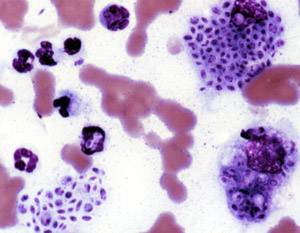 W
WSporotrichosis is a disease caused by the infection of the fungus Sporothrix schenckii. This fungal disease usually affects the skin, although other rare forms can affect the lungs, joints, bones, and even the brain. Because roses can spread the disease, it is one of a few diseases referred to as rose-thorn or rose-gardeners' disease. The species was named for Benjamin Schenck, a medical student who in 1896 was the first to isolate it from a human specimen.
 W
WStrangles is a contagious upper respiratory tract infection of horses and other equines caused by a Gram-positive bacterium, Streptococcus equi. As a result, the lymph nodes swell, compressing the pharynx, larynx, and trachea, and can cause airway obstruction leading to death, hence the name strangles. Strangles is enzootic in domesticated horses worldwide. The contagious nature of the infection has at times led to limitations on sporting events.
 W
WAlso known as Queensland Itch, Seasonal Recurrent Dermatitis (SSRD) , Summer Itch or more technically, Culicoides Hypersensitivity.
 W
WVenezuelan equine encephalitis virus is a mosquito-borne viral pathogen that causes Venezuelan equine encephalitis or encephalomyelitis (VEE). VEE can affect all equine species, such as horses, donkeys, and zebras. After infection, equines may suddenly die or show progressive central nervous system disorders. Humans also can contract this disease. Healthy adults who become infected by the virus may experience flu-like symptoms, such as high fevers and headaches. People with weakened immune systems and the young and the elderly can become severely ill or die from this disease.
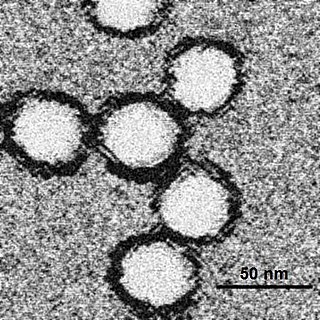 W
WWest Nile fever is an infection by the West Nile virus, which is typically spread by mosquitoes. In about 80% of infections people have few or no symptoms. About 20% of people develop a fever, headache, vomiting, or a rash. In less than 1% of people, encephalitis or meningitis occurs, with associated neck stiffness, confusion, or seizures. Recovery may take weeks to months. The risk of death among those in whom the nervous system is affected is about 10%.
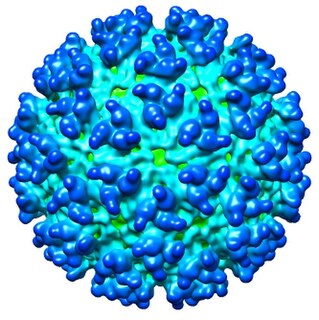 W
WThe Western equine encephalomyelitis virus is the causative agent of relatively uncommon viral disease Western equine encephalomyelitis (WEE). An alphavirus of the family Togaviridae, the WEE virus is an arbovirus transmitted by mosquitoes of the genera Culex and Culiseta. WEE is a recombinant virus between two other alphaviruses, an ancestral Sindbis virus-like virus, and an ancestral Eastern equine encephalitis virus-like virus. There have been under 700 confirmed cases in the U.S. since 1964. This virus contains an envelope that is made up of glycoproteins and nucleic acids. The virus is transmitted to people and horses by bites from infected mosquitoes and birds during wet, summer months.
 W
WWry nose is a deviation of the rostral maxilla, meaning that the upper jaw and nose are deviated to one side. This usually causes the nasal septum to be deviated as well, resulting in obstruction of the airway, and breathing difficulties. Wry nose is most obvious in species with long faces, such as horses and cattle. It is a congenital abnormality, meaning that it is present at birth.
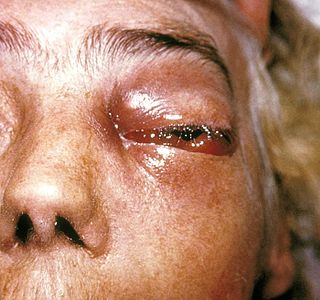 W
WZygomycosis is the broadest term to refer to infections caused by bread mold fungi of the zygomycota phylum. However, because zygomycota has been identified as polyphyletic, and is not included in modern fungal classification systems, the diseases that zygomycosis can refer to are better called by their specific names: mucormycosis, phycomycosis and basidiobolomycosis. These rare yet serious and potentially life-threatening fungal infections usually affect the face or oropharyngeal cavity. Zygomycosis type infections are most often caused by common fungi found in soil and decaying vegetation. While most individuals are exposed to the fungi on a regular basis, those with immune disorders (immunocompromised) are more prone to fungal infection. These types of infections are also common after natural disasters, such as tornadoes or earthquakes, where people have open wounds that have become filled with soil or vegetative matter.